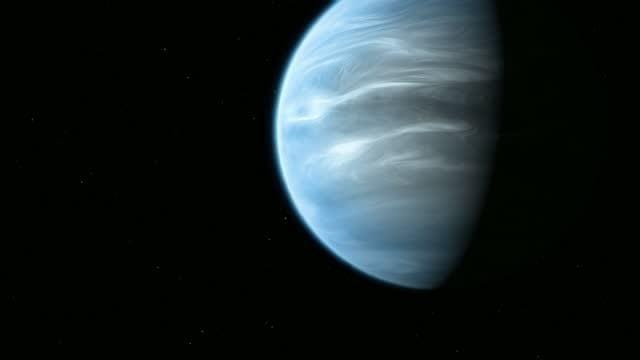The discovery of exoplanets, planets orbiting stars beyond our sun, has revolutionized our understanding of planetary systems. Recent advancements in detection techniques have led to the identification of numerous celestial bodies, some of which possess characteristics that raise intriguing questions about the potential for extraterrestrial life. One such discovery is K2-18b, a super-Earth—a planet significantly larger than Earth but smaller than Neptune—whose orbital path presents a unique challenge to our understanding of habitability. This super-Earth’s orbit is not a stable, consistent distance from its star. Instead, it oscillates, periodically moving both into and out of the star’s habitable zone, the region around a star where conditions might be suitable for liquid water to exist on a planet’s surface. This dynamic orbital pattern leads to significant variations in temperature and atmospheric conditions throughout the planet’s year.
The presence of liquid water is considered a crucial element for life as we know it. The habitable zone is defined by the range of distances from a star where liquid water can persist on a planet’s surface. However, K2-18b’s fluctuating position within this zone complicates this simple definition. Periods of intense heat could cause any surface water to evaporate, while periods of extreme cold could lead to its freezing. The planet’s atmospheric composition plays a vital role in mediating these temperature extremes. A dense atmosphere, for instance, could trap heat more effectively, potentially mitigating the temperature fluctuations and maintaining liquid water for longer periods. Conversely, a thin atmosphere would offer less protection, leading to greater temperature swings and potentially making the surface uninhabitable.
Scientists are employing sophisticated modeling techniques to simulate the climate and atmospheric conditions on K2-18b. These models incorporate various parameters, including the planet’s mass, radius, atmospheric composition, and orbital characteristics. By inputting different atmospheric compositions and analyzing the resulting climate simulations, researchers can assess the potential for liquid water to exist on the planet’s surface under these extreme conditions. The data gathered from these simulations will provide crucial insights into the planet’s habitability and the potential for life to thrive within such a dynamic environment. Further observations and analysis of K2-18b’s atmosphere are necessary to refine these models and provide a more complete picture of its potential for supporting life. The spectral analysis of the planet’s atmosphere, for instance, can reveal the presence of various gases, providing valuable clues about its composition and climate.
The study of K2-18b offers a unique opportunity to expand our understanding of planetary formation and evolution. The planet’s unusual orbital pattern raises questions about the processes that shaped its trajectory and its current state. Moreover, the ongoing research into K2-18b’s habitability has implications for the broader search for extraterrestrial life. If life can survive and adapt to such extreme climate fluctuations, it suggests that the range of environments capable of supporting life might be much broader than previously thought. The challenges presented by K2-18b’s dynamic environment highlight the complexities of assessing habitability and the need for continued exploration and research in the field of exoplanet science. Future missions equipped with advanced technologies might be able to provide more detailed observations of K2-18b’s atmosphere and surface, potentially revealing further insights into its potential for harboring life.


